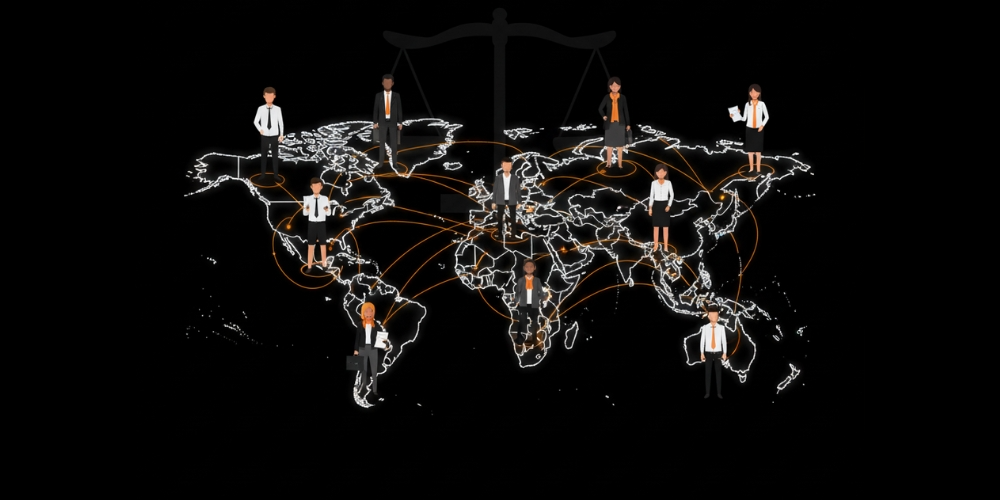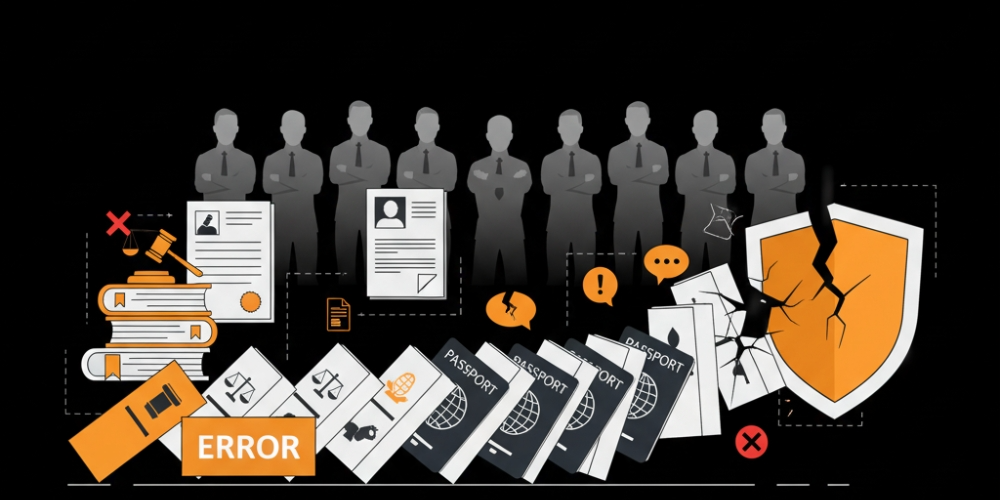
TL;DR
- TA leaders often miss labor laws, data rules, or misclassify workers.
- These global compliance missteps can lead to fines, lawsuits, or brand damage.
- A global compliance network and global compliance services reduce risk.
- Prioritize global HR compliance, audits, and local expertise before hiring.
- The payoff: smoother hiring, more trust, and safer scaling across borders.
When a talent acquisition (TA) leader says, “Let’s hire in 10 more countries this year,” the excitement is real. But behind that bold plan hides a complex web of laws, regulations, and local expectations. One slip in compliance can cost millions or worse, your reputation. That’s why global compliance must be your backbone, not an afterthought.
In this blog, you’ll learn what global compliance really means in recruitment, the most common mistakes TA leaders make, what’s at stake if things go wrong, and how to build a compliance-first approach that supports growth, not blocks it.
What Does Global Compliance Mean in Recruitment?

In recruitment, global compliance is about making sure your hiring, contracts, benefits, and processes respect every relevant law in each country where you hire. It’s more than just a local labor rule. It spans taxes, social security, data privacy, benefits, termination, and contracts.
For example, if you hire someone in Germany, you must follow German employment law for termination notice, leave policies, contributions for social insurance, etc. One mistake in one country can lead to back payments or even legal action.
In many cases, TA leaders partner with global compliance services or tap into a global compliance network of advisors, law firms, or Employer-of-Record (EOR) providers to get the on-the-ground rules right. That way, your core team isn’t reinventing the wheel in every jurisdiction.
It is important to keep global HR compliance in mind. Processes such as onboarding, payroll, and employee benefits need to align with the local regulations in each country. Equal attention should be given to global rights compliance, which includes worker protections, anti-discrimination rules, and employee rights that vary from one region to another.
Spot the Country Rule — Global Compliance Quiz
Common Global Compliance Mistakes TA Leaders Make

Here are frequent traps I’ve seen TA leaders fall into:
Misclassifying contractors vs. employees
Many assume contractor status is low-risk. But in places like Brazil or France, misclassification triggers large fines.
Neglecting data privacy laws and cross-border transfers
Collecting candidate info across borders often runs into GDPR, CCPA, or country-specific laws. Forget to encrypt or follow consent rules, and you’re in trouble.
Assuming one-size-fits-all contracts
Using the same employment agreement across multiple countries ignores local clauses (e.g., probation rules, severance, notice periods).
Skipping local mandatory benefits or statutory leave
In some countries, employees are entitled to national holiday pay, social insurance contributions, maternity leave, or termination severance. Overlooking these is costly.
Relying too heavily on the central legal team without local partners
A legal team based in HQ often lacks insight into nuances (e.g., labor tribunals, union demands) in distant jurisdictions.
Failing to audit or review compliance over time
Rules change. What’s legal today may be illegal in two years. Without periodic audits, your compliance weakens.
Undervaluing local cultural norms and informal labor expectations
Some countries expect certain benefits or allowances (transport, housing) that aren’t legally required but culturally important. Missing them makes your offers uncompetitive or risky.
Risks of Compliance Mistakes in Global Hiring

When compliance is overlooked, the consequences can escalate quickly. The potential outcomes include the following.
Hefty fines and penalties
In the U.S., labor violations and payroll errors can lead to multi-million dollar fines. Globally, many states impose daily fines for each violation.
Back pay and social contributions
If a court deems a misclassified worker was truly an employee, you may owe back salary, benefits, and contributions.
Lawsuits or government action
Employees or agencies may bring claims. Legal battles abroad often cost more in legal fees, translation, local counsel, and delays.
Reputation damage
News of unfair treatment or legal fights in foreign countries hurts your employer brand and trust with stakeholders (clients, investors, public).
Operational disruption and business risk
You may have to pause hiring or operations in that country until issues are resolved.
Loss of trust among employees
If your global team sees you slip on compliance, morale suffers, attrition rises, and recruiting gets harder.
Regulatory scrutiny beyond hiring
Noncompliance in labor law can bleed into tax audits, immigration investigations, or data protection breaches.
To illustrate scale, a 2024 survey found that 55% of companies now use HR tech for compliance and security, up sharply from prior years, underscoring how serious the issue is becoming.
How TA Leaders Can Avoid Compliance Mistakes

Avoiding mistakes isn’t about memorizing every global law. It’s about building systems and habits that prevent small oversights from snowballing into lawsuits. Here are key steps TA leaders can take:
Partner with local experts
Use Employer of Record (EOR) firms or law consultants that specialize in UAE employment law, European labor codes, or Asian HR mandates. Local knowledge closes the gap your HQ legal team can’t.
Conduct compliance audits regularly
Twice-yearly reviews of contracts, payroll, and benefits in each country can surface gaps before regulators do.
Build compliance into technology workflows
With workforce planning and analytics tools, you can set triggers for contract approvals, monitor expiring work permits, and ensure correct tax deductions. When combined with automation, this reduces human error.
Train recruiters and HR teams
Global rules change constantly. Ongoing training ensures recruiters know what’s legal to ask in interviews, what data they can collect, and how to handle contracts.
Create a global compliance playbook
Document the rules country by country. This isn’t a static PDF. It’s a living guide updated quarterly. It helps recruiters move fast without guessing.
Benefits of Compliance-First Hiring

Compliance is often seen as red tape. But leaders who flip the script see it as a competitive advantage:
Stronger employer brand
Candidates trust employers that respect local laws and worker rights. A reputation for fairness improves hiring success.
Fewer disruptions
Avoiding penalties means no sudden pauses in hiring or operations. You keep scaling smoothly across borders.
Investor confidence
Investors want to see risk managed. Showing strong compliance makes fundraising and expansion easier.
Better employee retention
Staff are more loyal when they see benefits and rights honored without shortcuts.
Long-term cost savings
Prevention is cheaper than fixing. Paying for global compliance services costs less than fighting lawsuits in multiple countries.
In practice, compliance-first hiring isn’t bureaucracy. It’s insurance for your growth. A TA leader who invests early avoids expensive mistakes later.
Conclusion
The race to expand internationally is exciting, but it’s also risky. TA leaders who treat global compliance as a box-ticking exercise expose their organizations to penalties, delays, and reputational damage. Those who approach it as a strategic pillar, supported by strong partners and systems, unlock smoother scaling and stronger trust with candidates and employees alike.
In short, compliance isn’t a brake on growth. It’s the guardrail that keeps your global hiring engine running fast and safe.




